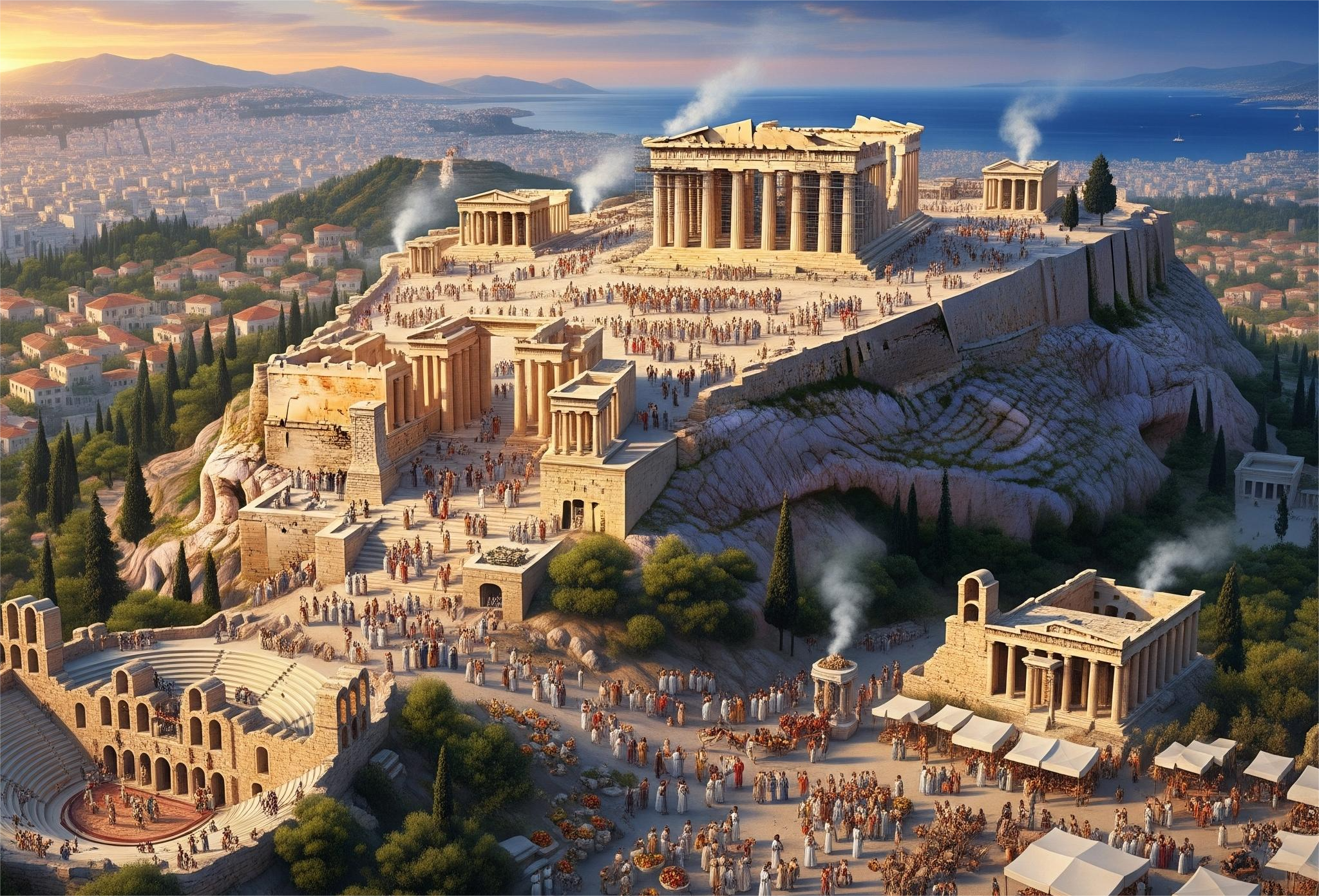Towering above the heart of Athens, the Acropolis is more than just a rocky hill dotted with ruins—it is the enduring symbol of ancient Greek civilization. In antiquity, this sacred citadel was a powerful blend of religious reverence, political ideology, and cultural pride, anchoring the identity of Athens in stone.
From its monumental temples to its commanding presence over the city, the Acropolis served as a living testament to Athens' wealth, artistry, and devotion to the gods—especially Athena, the city’s patron deity.
The Acropolis: More Than a Hill
The word Acropolis comes from the Greek akron (highest point) and polis (city), meaning “high city.” Though many Greek city-states had an acropolis, Athens’ Acropolis is by far the most famous. It served three main purposes:
Religious Center – The Acropolis was home to the most important temples dedicated to Athena and other gods.
Political Symbol – It represented Athenian democracy, power, and victory, especially after the Persian Wars.
Cultural Showcase – With its architecture and sculptures, it became a display of Greek genius in art, engineering, and philosophy.
The Temples: Sacred Spaces of Worship
At the heart of the Acropolis stood several majestic temples. These structures weren’t just beautiful—they were deeply symbolic, representing the city’s faith and values.
The Parthenon
The most iconic building on the Acropolis, the Parthenon (447–432 BCE) was dedicated to Athena Parthenos (Athena the Virgin). It was both a religious shrine and a treasury, housing a massive gold-and-ivory statue of the goddess by Phidias.
The Parthenon symbolized:
Religious devotion to Athena
Celebration of Athenian victory over Persia
Confidence in democracy and rationality, reflected in its perfect symmetry and mathematical precision
The Erechtheion
This unusual temple was built to honor multiple deities: Athena, Poseidon, and Erechtheus, a mythical king of Athens. Its famous Caryatids (female-shaped columns) adorn the porch.
The Erechtheion represented:
The mythological origins of Athens
The sacred olive tree gifted by Athena
A blend of religious traditions in one space
The Temple of Athena Nike
A smaller temple, but highly symbolic, it celebrated Athena as the bringer of victory (Nike). Built during the Peloponnesian War, it was meant to inspire hope and unity.
The Acropolis as a Political Symbol
After the Persian sack of Athens in 480 BCE, the Acropolis was rebuilt during the leadership of Pericles, marking a Golden Age for Athens. The reconstruction wasn't just about repair—it was a political statement:
We have risen from destruction.
We are the leaders of the Greek world.
Our gods favor us.
The temples were funded largely by the Delian League treasury, a coalition led by Athens. Critics (even in antiquity) saw this as a sign of Athenian imperialism, as wealth from other city-states was used to glorify Athens.
Thus, the Acropolis became a visual narrative of power—Athens as both divine protector and political hegemon.
Religious Festivals and Public Life
The Acropolis played a key role in the Panathenaic Festival, the city’s most important religious celebration held every four years. A grand procession would wind through Athens and culminate at the Acropolis, where:
A new robe (peplos) was offered to Athena’s statue
Sacrifices and rituals were held
Citizens reaffirmed their unity and shared heritage
The sacred space fostered collective identity, blending religion and civic pride in a spectacular display of pageantry and devotion.
Legacy and Influence
The Acropolis wasn’t just significant in its own time—it has become a universal symbol of classical ideals: beauty, balance, reason, and democracy.
Today, it remains a World Heritage Site and a reminder of how a city’s sacred spaces can reflect its ideals, ambitions, and soul.







